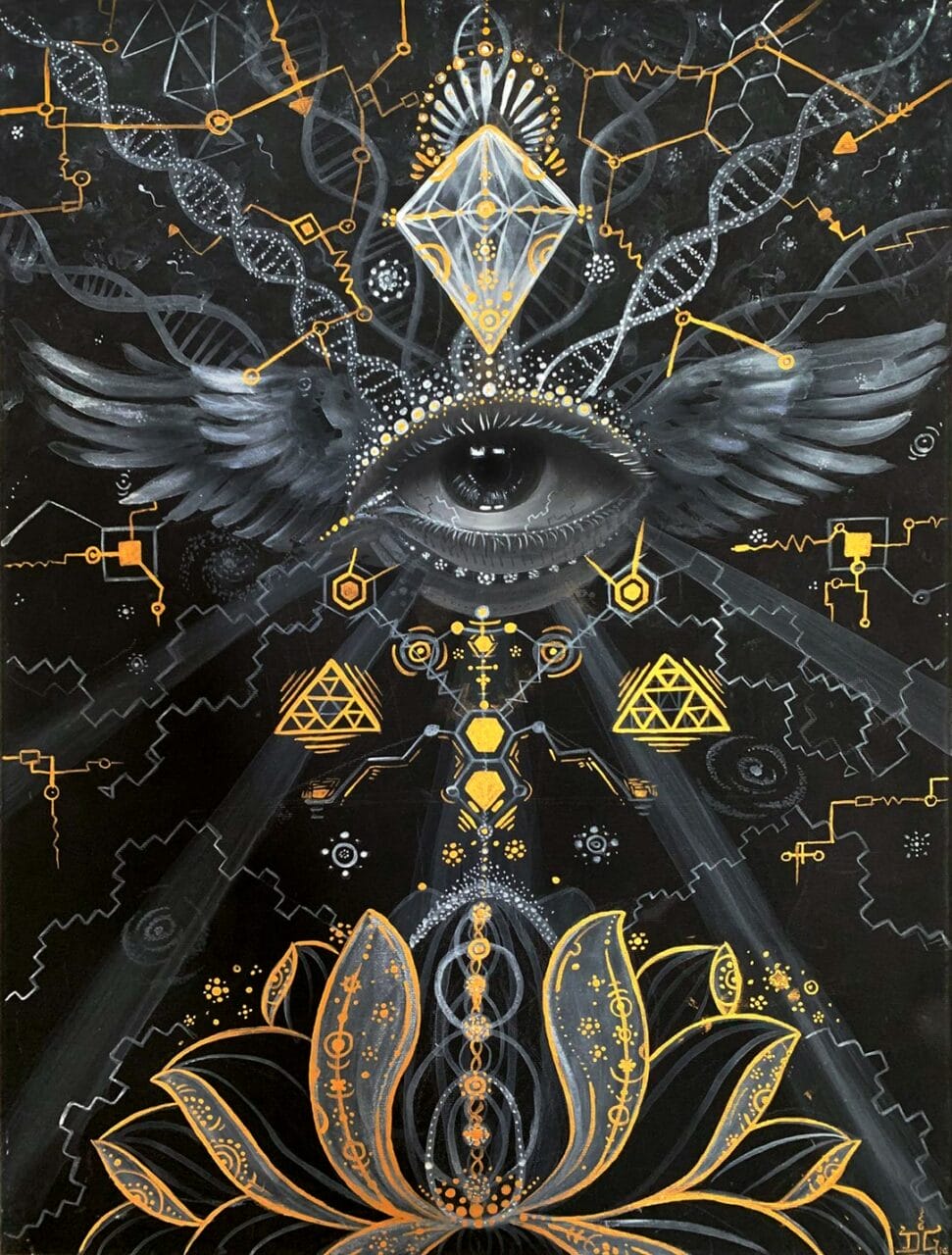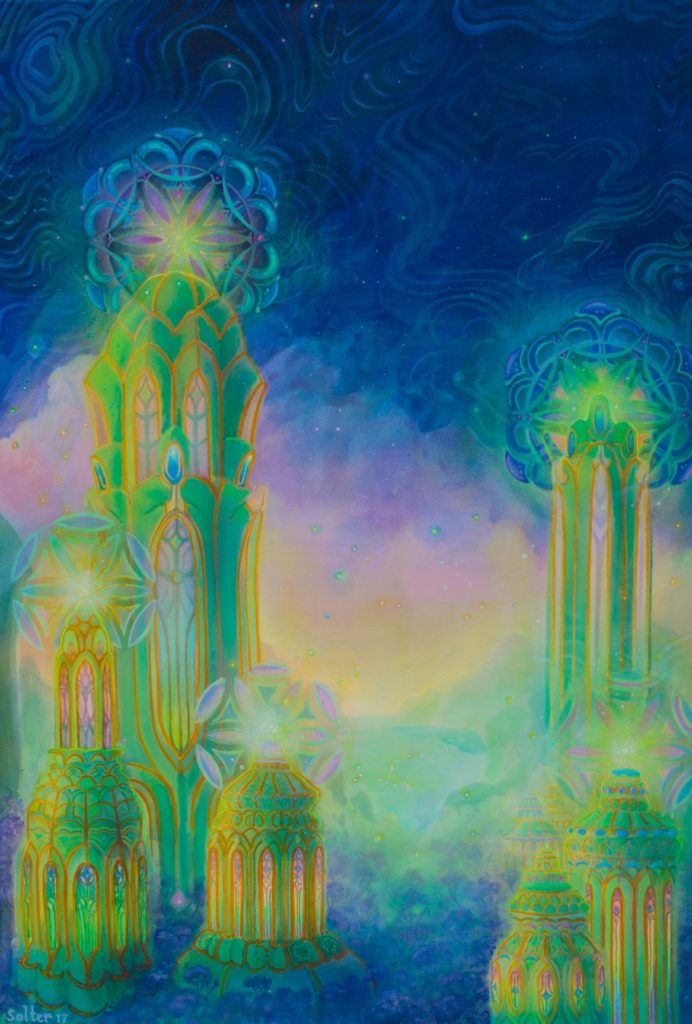
© Uni Kaya
The Historical Account of Magic Mushrooms
The history of Magic Mushrooms can be traced back to 9000 BC according to historical documents. These unique mushrooms, boasting over 200 species, are rich in psilocybin, a substance that triggers hallucinogenic effects. The consequences may involve altered perception, visual and auditory hallucinations, as well as profound spiritual experiences. For millennia, these mushrooms have been incorporated into various spiritual ceremonies, rituals, and practices across diverse cultures and tribes. A significant number of these historical instances originate from North and South America.
Magic Mushrooms in Ancient Times
Throughout history, many cultures have utilized natural psychedelics. Evidence found in the Sahara Desert suggests that humans were consuming Psilocybe Cubensis as far back as 7000 years ago. Archaeological findings reveal depictions of this hallucinogenic substance in prehistoric art across various regions. For instance, the indigenous tribes of North Africa in the Sahara illustrated its use in their paintings dating back to around 9000 BC. Similarly, the renowned Selva Pascuala mural rock painting in Spain, approximately 6000 years old, indicates the use of Psilocybe Hispanica in religious rituals. The influence of these substances on cultural evolution, religion, art, societal norms, and everyday life is becoming increasingly clear. This substance has undoubtedly left a deep mark on our culture and society.
Historical Overview of Magic Magic Mushrooms Use
Historically,magic Magic Mushrooms have been utilized over a long period. The psychoactive substance that is known today has a history spanning various centuries, with diverse practices surrounding its usage. Who could resist the generosity of nature? It’s about time for Shrooms Online Canada to delve into the historical trajectory that has led Magic Mushrooms to its current status.
Major Highlights
- Dried Magic Mushrooms have been integral to traditional rituals and spiritual healing for centuries. Today, they are used as a treatment for mental health disorders.
- Magic Mushrooms became a hallmark of the hippie culture and played a significant role in the psychedelic revolution, encouraging its recreational use.
- Key figures such as Wasson, Sabina, and McKenna brought psilocybin to the attention of the modern world.

© Jonathan Solter
Endorsing the Stoned Ape Theory
The Stoned Ape Hypothesis was originally proposed by Terence McKenna, who suggested that psilocybin could have been a pivotal factor in human evolution, specifically in the development of cognition. Despite facing some criticism, the intriguing nature of this theory remains undebatable.
Primitive Societies and Sacred Ceremonies
Ancient civilizations depicted cubes in their symbols, artwork, and statues, indicating the ritualistic use of Magic Mushrooms. The Mayans and Aztecs, for instance, used it as a medium for interacting with supernatural beings, including gods. In the diverse Aztec culture, it was referred to as “teonanácatl“, which translates to “flesh of the gods”. They had no concept of a psychedelic experience, leading them to view it as a divine entity. Moving up north to Siberia, shamans there used hallucinogenic Magic Mushrooms for spiritual and traditional purposes. They specifically employed a hallucinogenic substance (Magic Mushrooms), known as “Amanita Muscaria”, despite its toxicity. The ritualistic use of this substance dates back nearly ten thousand years. In African tribal rituals, particularly amongst the tribes of Congo and Zimbabwe, cubes were used to communicate with ancestors, induce visions, and promote spiritual healing. These ancient societies provide valuable insights into the contemporary use of psilocybin. Their reverence for this substance stems from its association with divinity and its ability to trigger mystical experiences.
Magic Mushrooms in Legends and Folktales
Various narratives, including those from Gordon Wasson, highlight the connection between Magic Mushrooms and the mystical world, underlining its significance in folklore and mythology as a medium for divine communication and spiritual awakening. In ancient India, the Soma—a ceremonial drink mentioned in the Vedas—was believed to generate altered states of consciousness. Scholars like Wasson hypothesize that it could have been prepared from psychoactive plants, specifically fly agaric. Some even suggest that this ancient drink might have consisted of a mixture of different plants. Regardless of its origins, the psychedelic history suggests that Soma facilitated the manifestation of sacred symbols during rituals, symbolizing a portal to higher wisdom or spiritual illumination.
The Contemporary Era
A Glimpse at the
Origins
Historical documentations from the pre-Columbian era indicate that psilocybin Magic Mushrooms was used by the Mayans and Aztecs. However, in the 15th and 16th centuries, Spanish authorities deemed its usage as uncivilized and forbade it. Despite the ban, shamans discreetly continued the consumption of magic Magic Mushrooms, thereby preserving their cultural heritage for over four centuries.
Rediscovery in the Western World
The 1950s witnessed a resurgence of these substances in the Western world, largely due to the pioneering work of individuals like R. Gordon Wasson, Roger Heim, and Albert Hofmann. During a visit to Mexico, they managed to isolate the two psychedelic components (psilocybin and psilocin) present in the Magic Mushrooms obtained from the Mazatec tribe. Wasson later shared his discoveries, uses, and insights about magic Magic Mushrooms in Life magazine. His writings and personal narratives led to the substance gaining recognition as a potent hallucinogen. By the advent of the 1960s, the substance had become emblematic of the Hippie movement and was seen as a pathway to spiritual experiences. However, its usage also sparked considerable controversy and triggered a revolution in the recreational use of hallucinogenic substances.
Subsequent Progress: Worldwide Prohibition
In 1971, psilocybin was classified as a Schedule 1 illegal drug by the United Nations Convention on Psychotropic Substances, alongside Lysergic Acid Diethylamide and N, N-Dimethyltryptamine. They were all regarded as having no medical benefits and a high propensity for misuse. This resulted in widespread criminalization in Western nations, including Canada and the U.S., severely limiting the spiritual and therapeutic uses of the substance.
The Modern-Day Revival of Psilocybin
In recent years, there has been a softening of the strict laws governing the use of psilocybin, beginning with its decriminalization. This development coincides with the UN’s provision for member nations to regulate the substance at their own discretion. Simultaneously, a growing body of research and clinical trials related to psychedelics and consciousness strongly endorses the potential medicinal benefits of psilocybin. A 2021 study investigating the therapeutic use of psychedelics suggests that the 1970 ban significantly hindered further research. Nevertheless, an initial study in 2004 revived interest in psilocybin, suggesting potential uses in neuropsychiatry, particularly in treating mental health conditions such as:
- Depression, Anxiety, and Stress
- Post-traumatic Stress Disorder (PTSD)
- Obsessive-compulsive Disorder (OCD)
- Substance Abuse (Aiding in Addiction Recovery)
- Excessive Alcohol Consumption and Drugs)
Media and Art’s Influence
Conversations surrounding psychedelic cubes have become so pervasive that they’re represented across diverse media formats. The public’s fascination for these substances has been revitalized through various outlets of media, art, and literature. Movies such as “Fantastic Fungi” by Director Louie Schwartzberg, and documentaries examining their therapeutic attributes, have enriched the public’s understanding of their psychological and physiological effects. Michael Pollan, the author of “How to Change Your Mind,” has delved into the application of psychedelics for mental health and spiritual development, thus rekindling interest in their societal and therapeutic relevance.
Prominent Historical Advocates of Fungi
- María Sabina: Sabina, a Mazatec shaman and poet from Mexico, played a role in introducing cubes to the Western world. She allowed Wasson to witness her Magic Mushrooms rituals.
- Gordon Wasson: Wasson, a writer, is credited for bringing worldwide recognition to the drug. His in-depth account of his encounters with Sabina helped broaden the understanding of its indigenous usage.
- Terence McKenna: A vocal proponent for psychedelics, McKenna played a key role in underscoring their cultural and philosophical significance. Through his talks, writings, and research, McKenna popularized the “Stoned Ape” theory, labeling it as a cognitive development tool that influenced society.
The Timeline – A Brief Summary
with TRD.
| Prehistoric | Stone art found in the Sahara, Africa, depicts its prehistoric usage. |
| Ancient | Maya and Aztec civilizations incorporated teonanácatl into their religious and spiritual rituals. |
| 16th Century | Its usage was discouraged due to its association with Indigenous beliefs. |
| 18th Century | In 1799, the drug’s “intoxicating” effects were discovered when four children accidentally ingested Psilocybe Semilanceata, highlighting the negative implications of its use. |
| 20th Century | Wasson and Sabina introduced the drug to the Western world, sparking the psychedelic revolution among the hippies. The UN legalized the possession and use of the substance. |
| 21st Century | Clinical studies to ascertain its medical potential are increasing. Health Canada has granted a Special Access Program for its application. |
The Emergence and Evolution of the Psychedelic Era | Purchase Magic Mushrooms Online at Shrooms Online Canada
With the backing of strong scientific research, the regular use of cubes at Shrooms Online Canada is expected to expand until it achieves worldwide acknowledgment. Shrooms Online Canada’s online Magic Mushrooms store is geared up to support this paradigm shift. Our extensive product range attracts customers, inspiring them to embark on the enigmatic and therapeutic journey of psilocybin. Secure your preferred items from Zoomies today.
Commonly Asked Questions
No, Amanita Muscaria does not contain the active ingredients present in Psilocybe Cubensis. Rather, the psychoactive compounds in fly agaric are muscimol and ibotenic acid. A prevalent theory about Soma’s origin proposes it as a mixture of various psychoactive plants. Likewise, ayahuasca is a mind-altering brew. However, the only similarity between the two is the consideration of soma as an analogue of ayahuasca. It was scrutinized for potential Magic Mushrooms poisoning after being classified as a toxic Magic Mushrooms. Today, we recognize it as the Psilocybe Mexicana.

